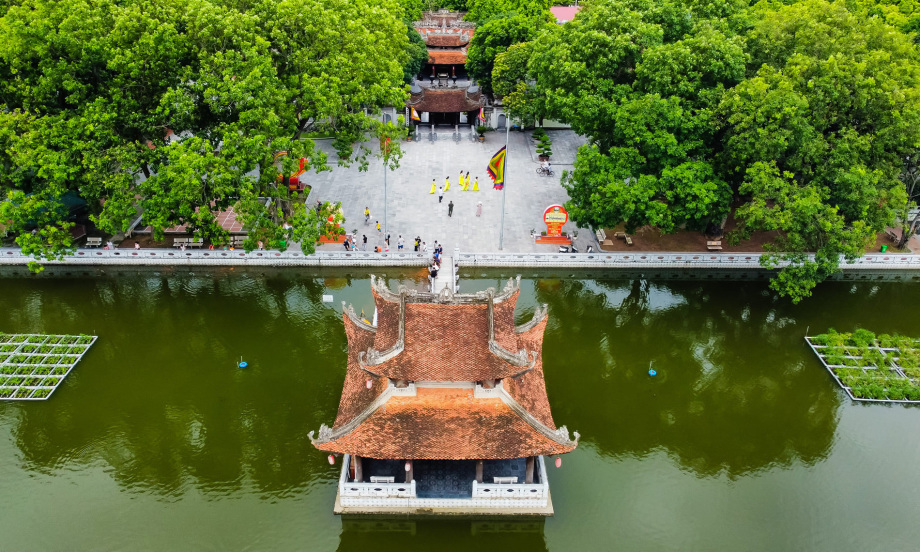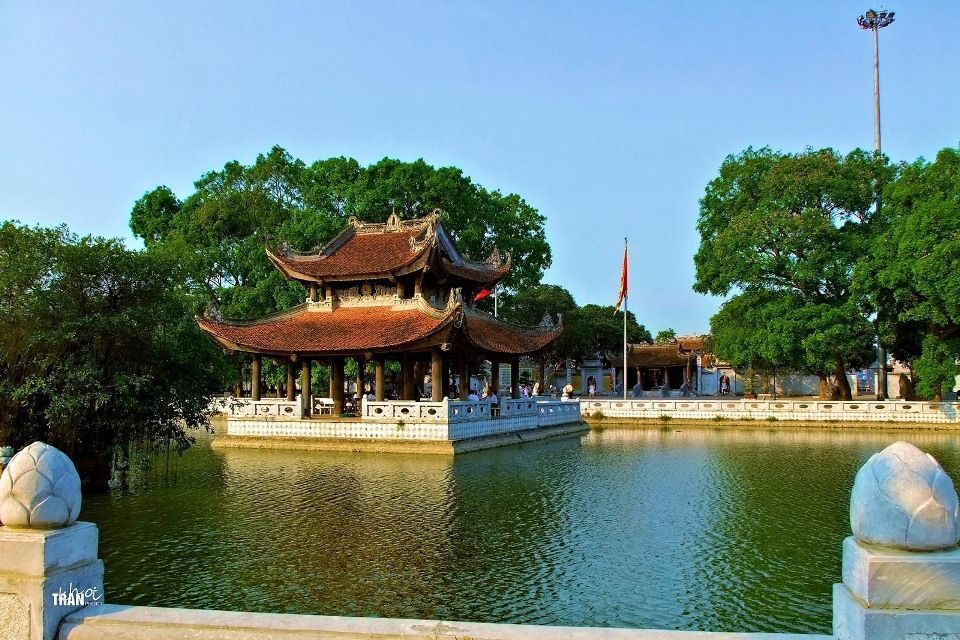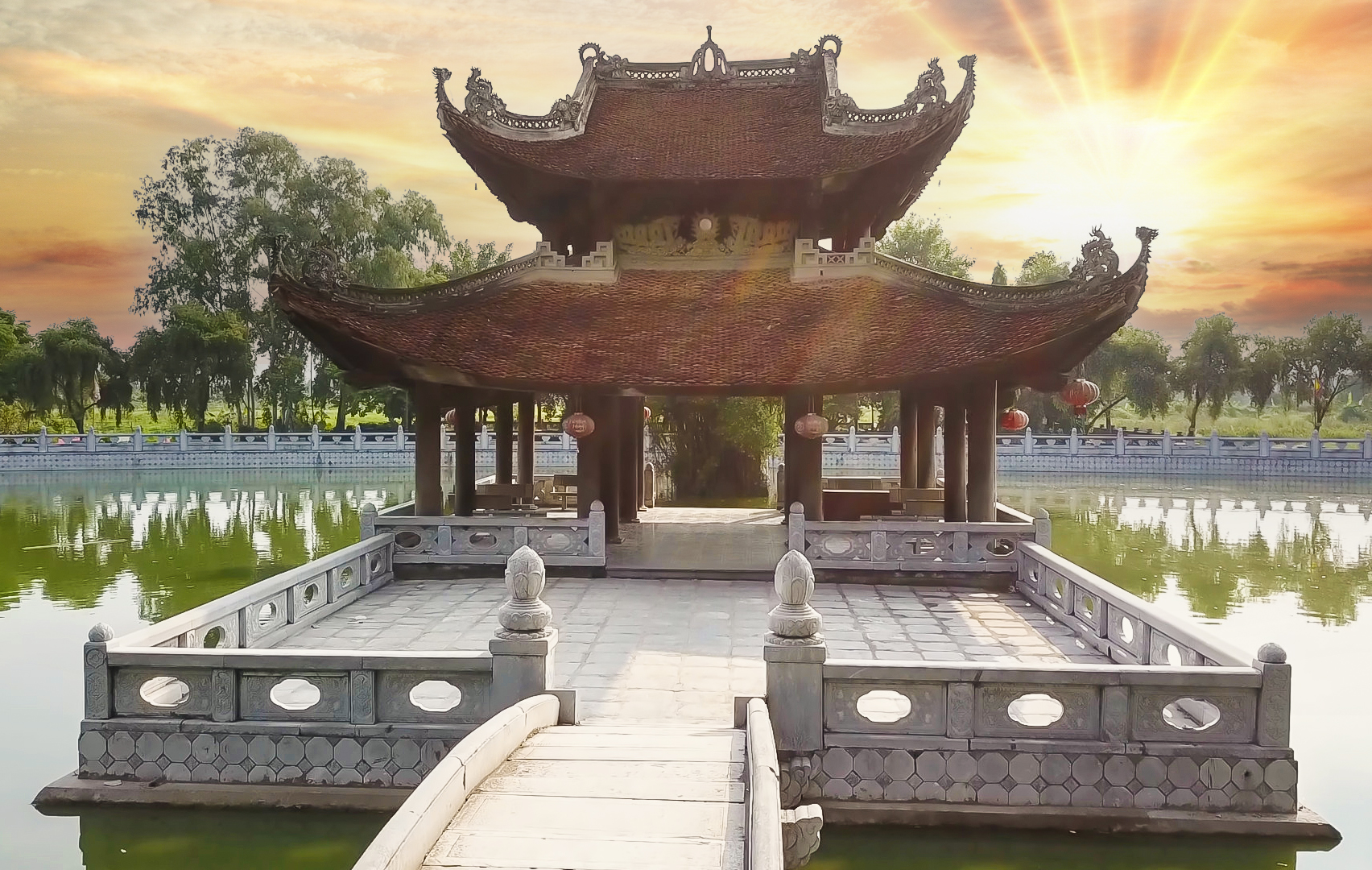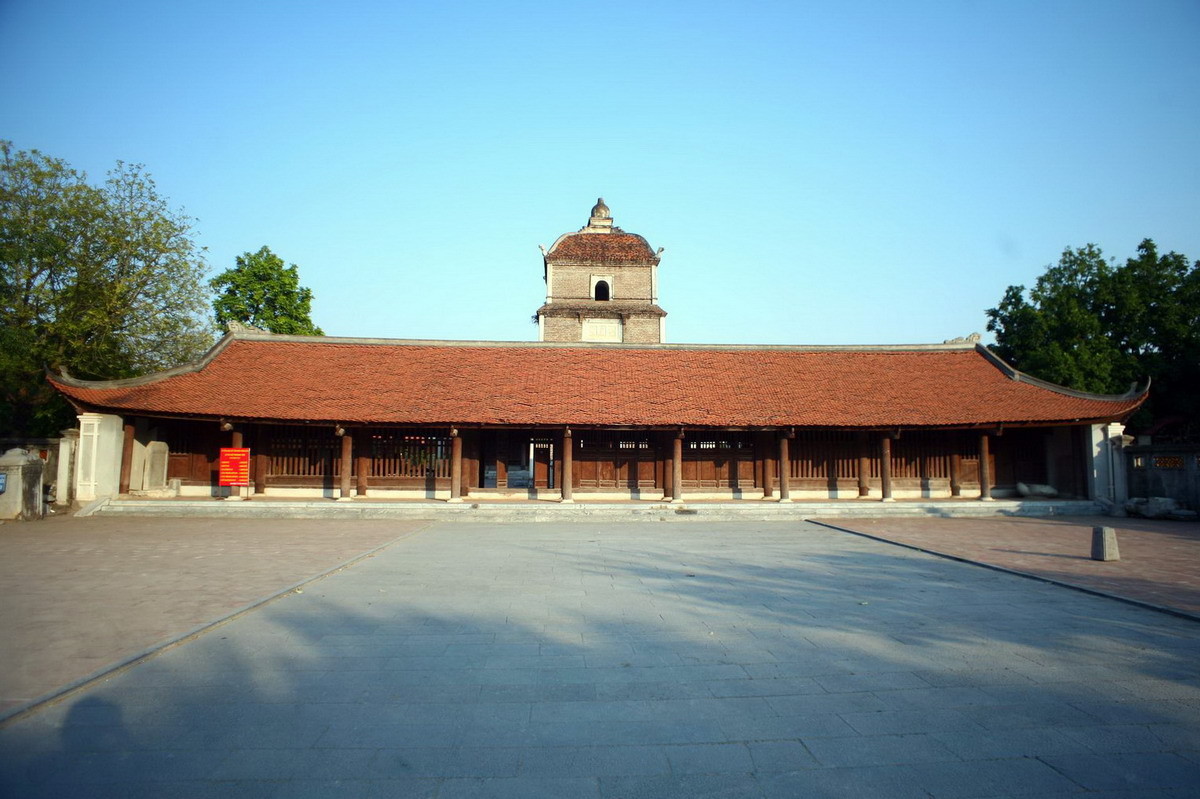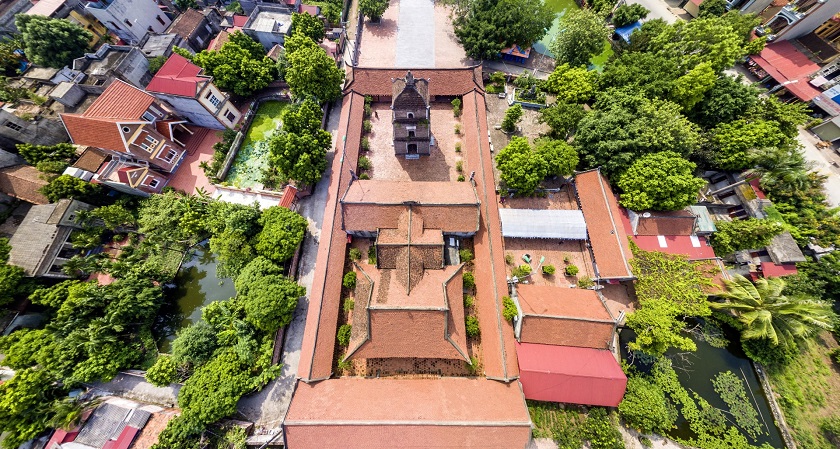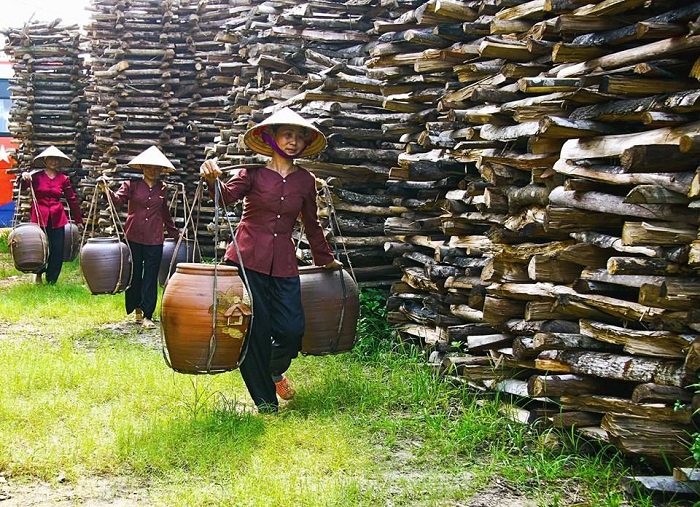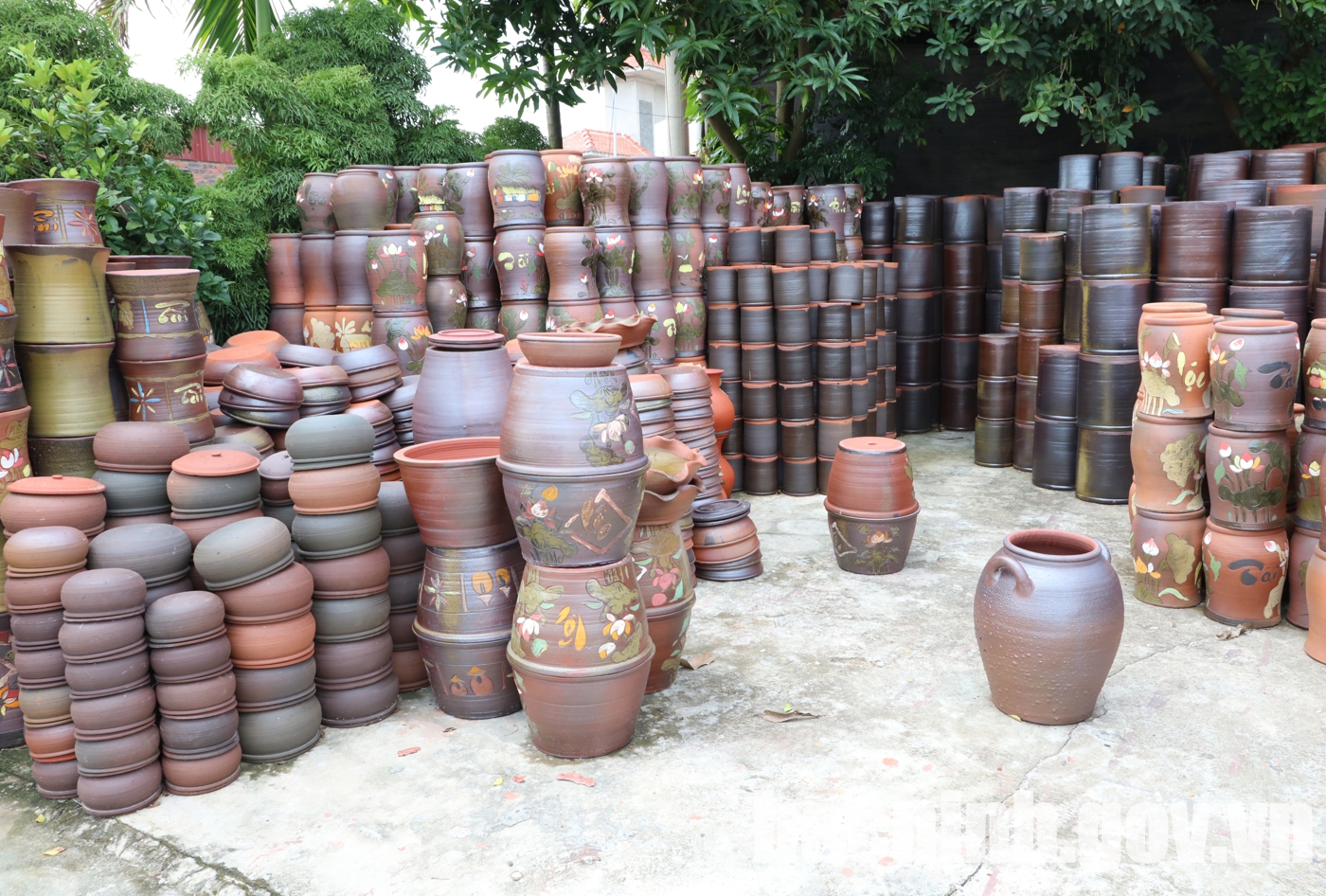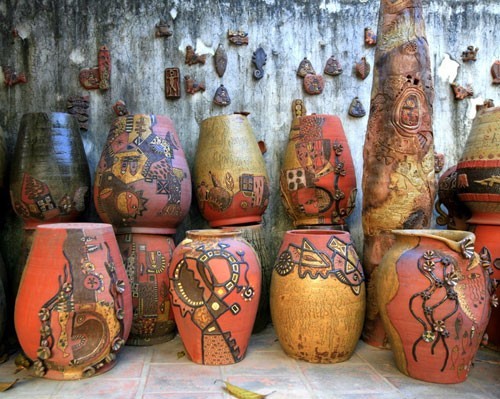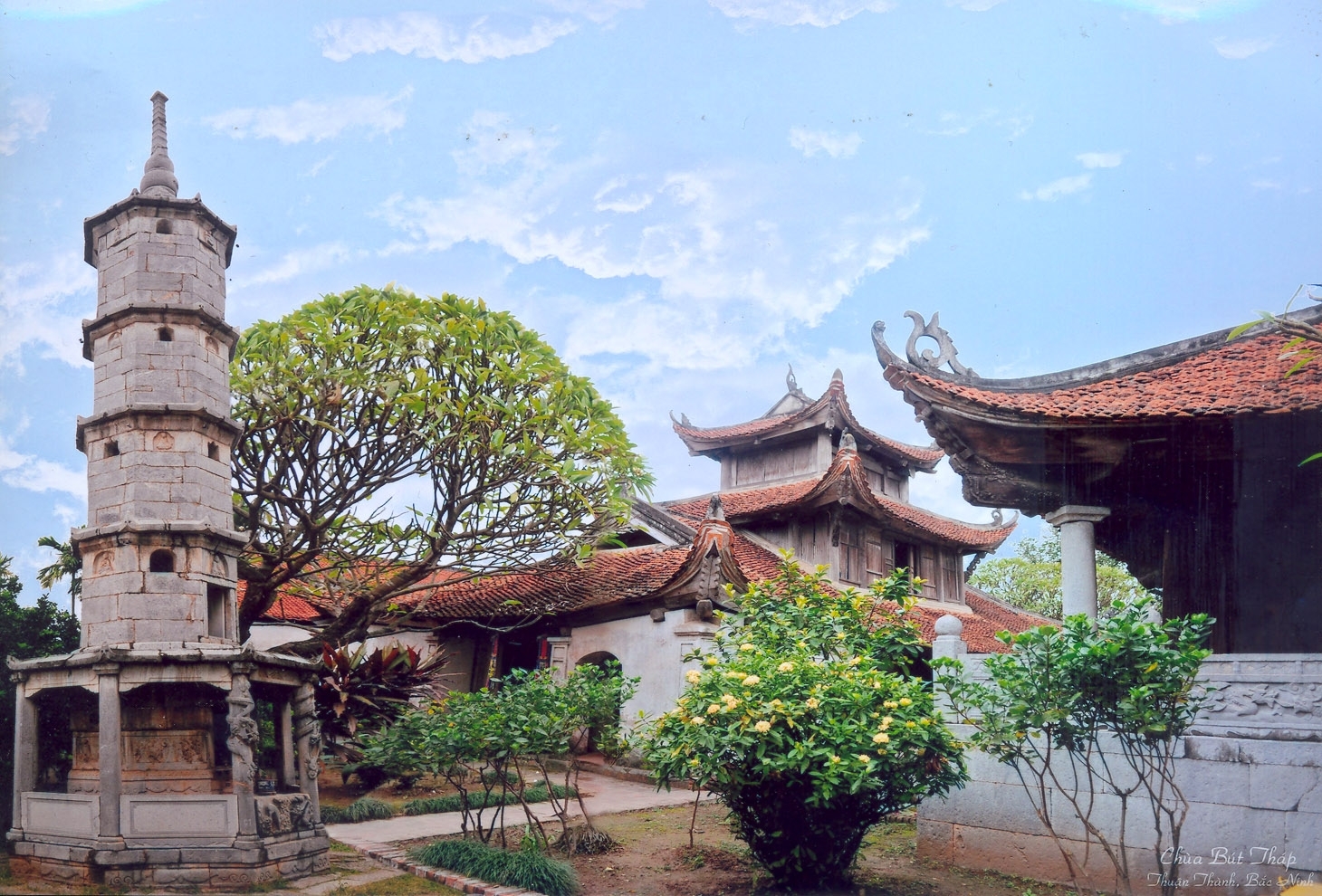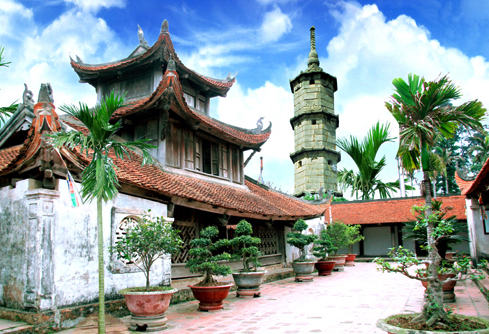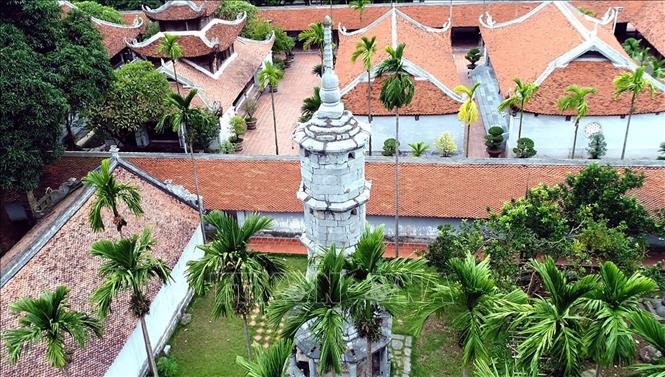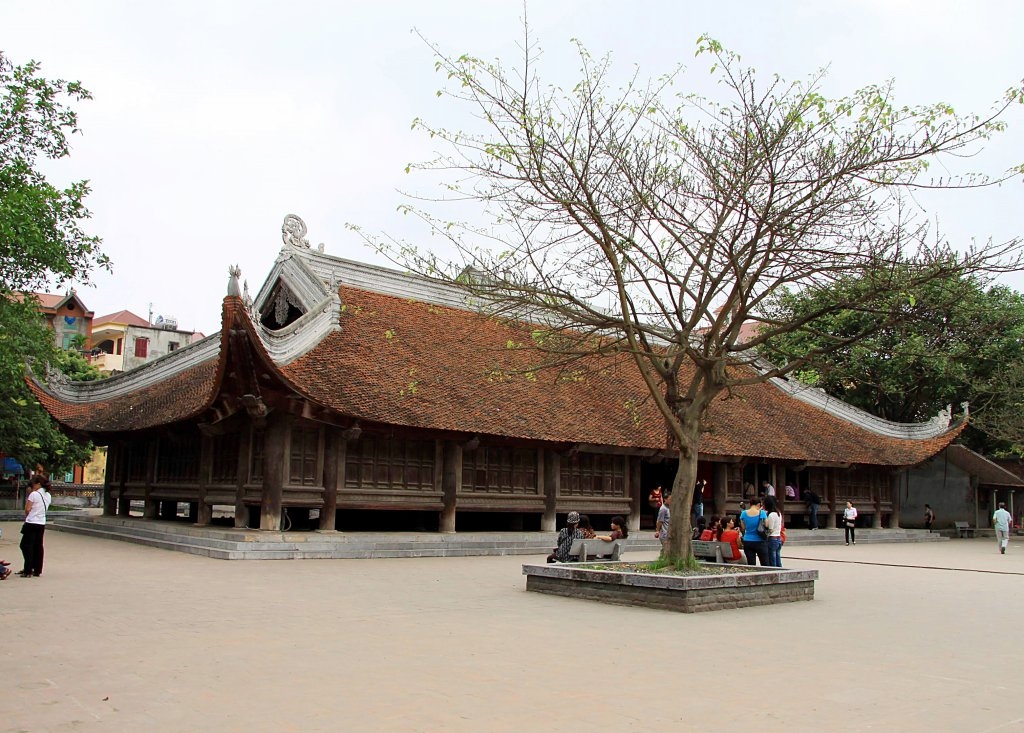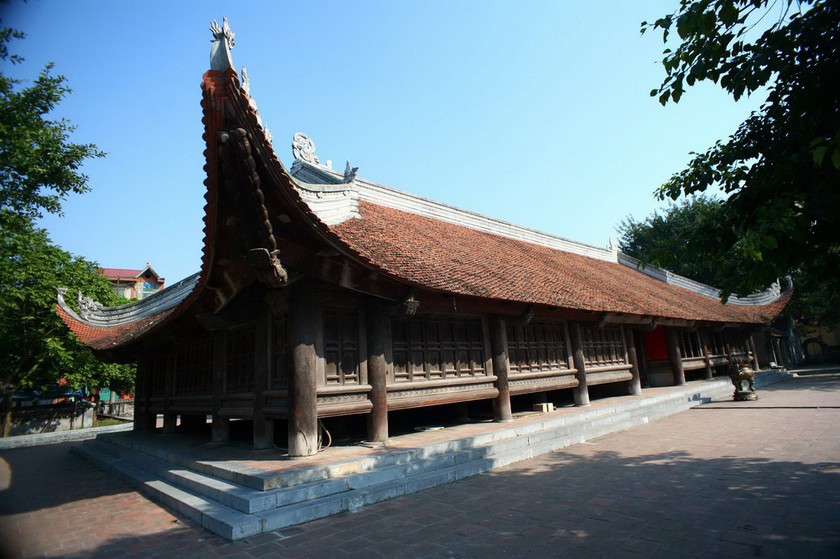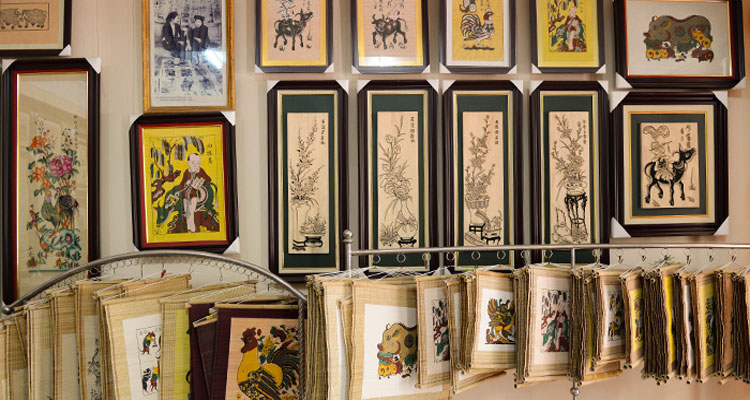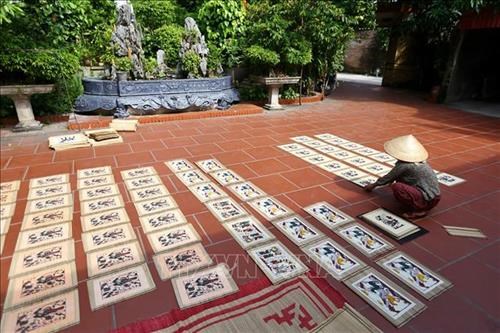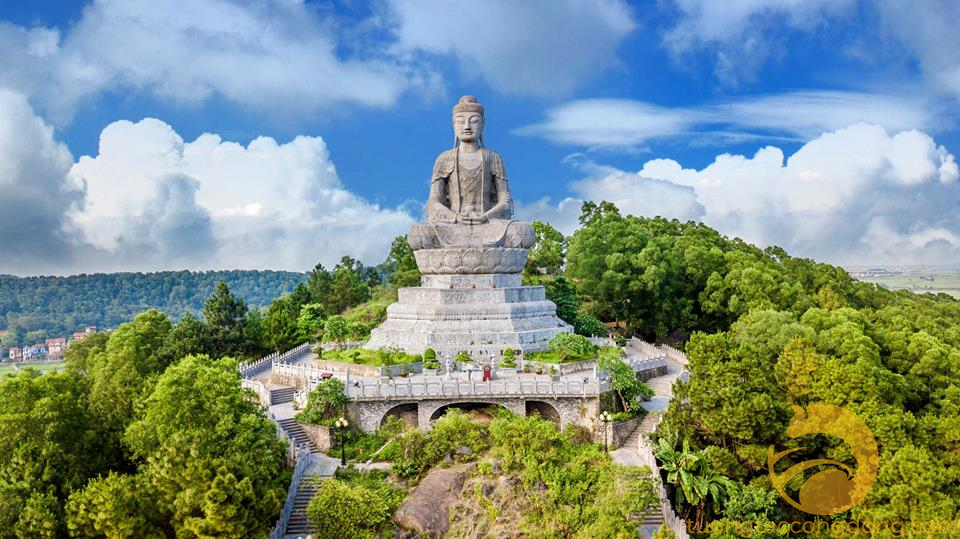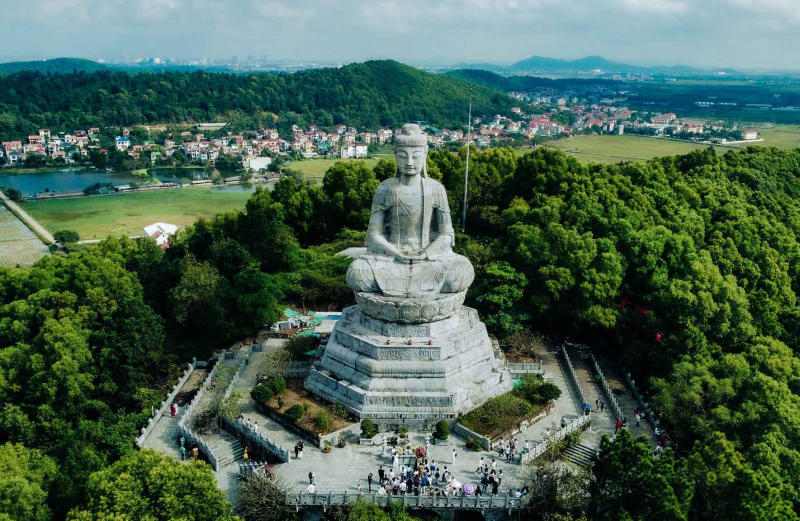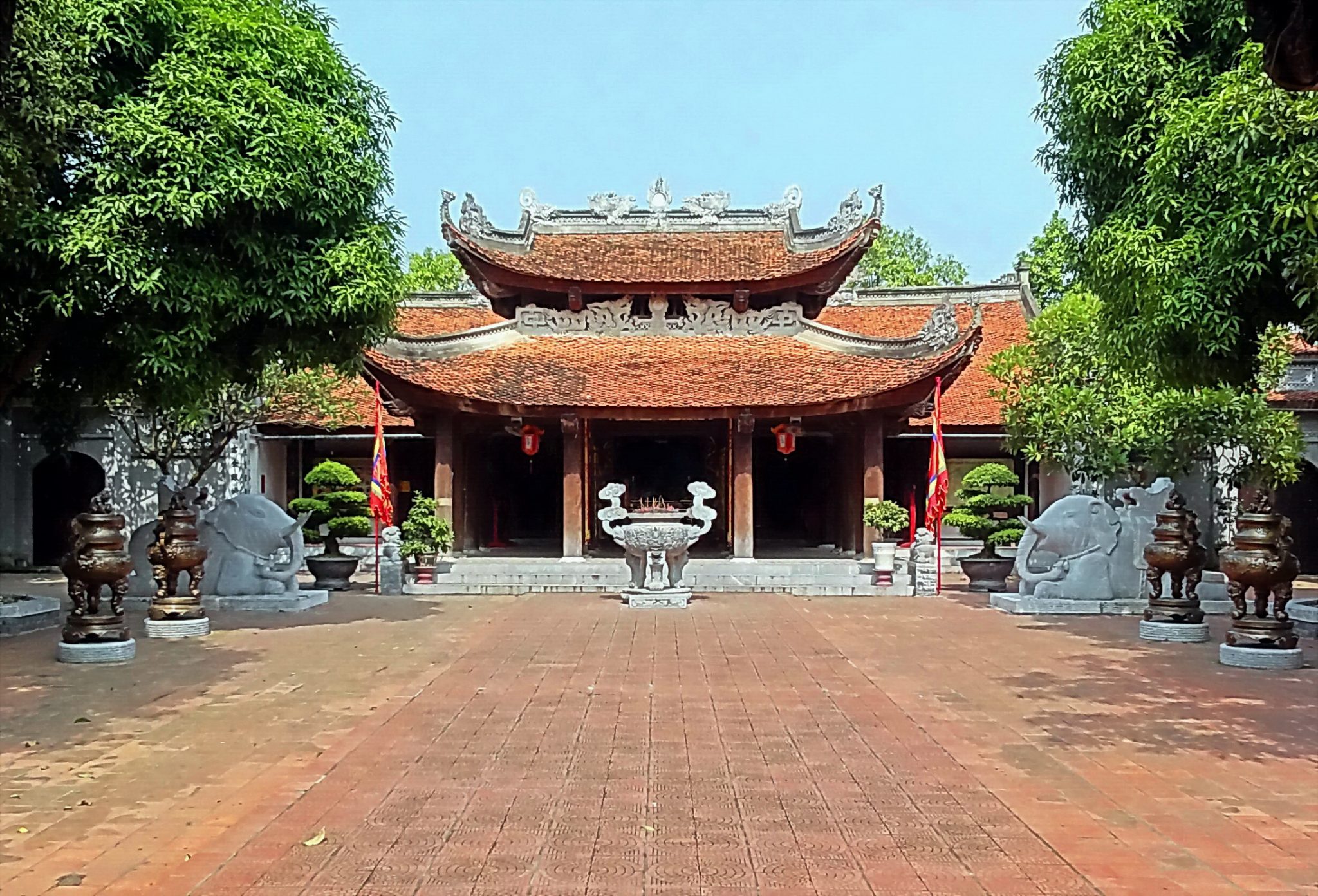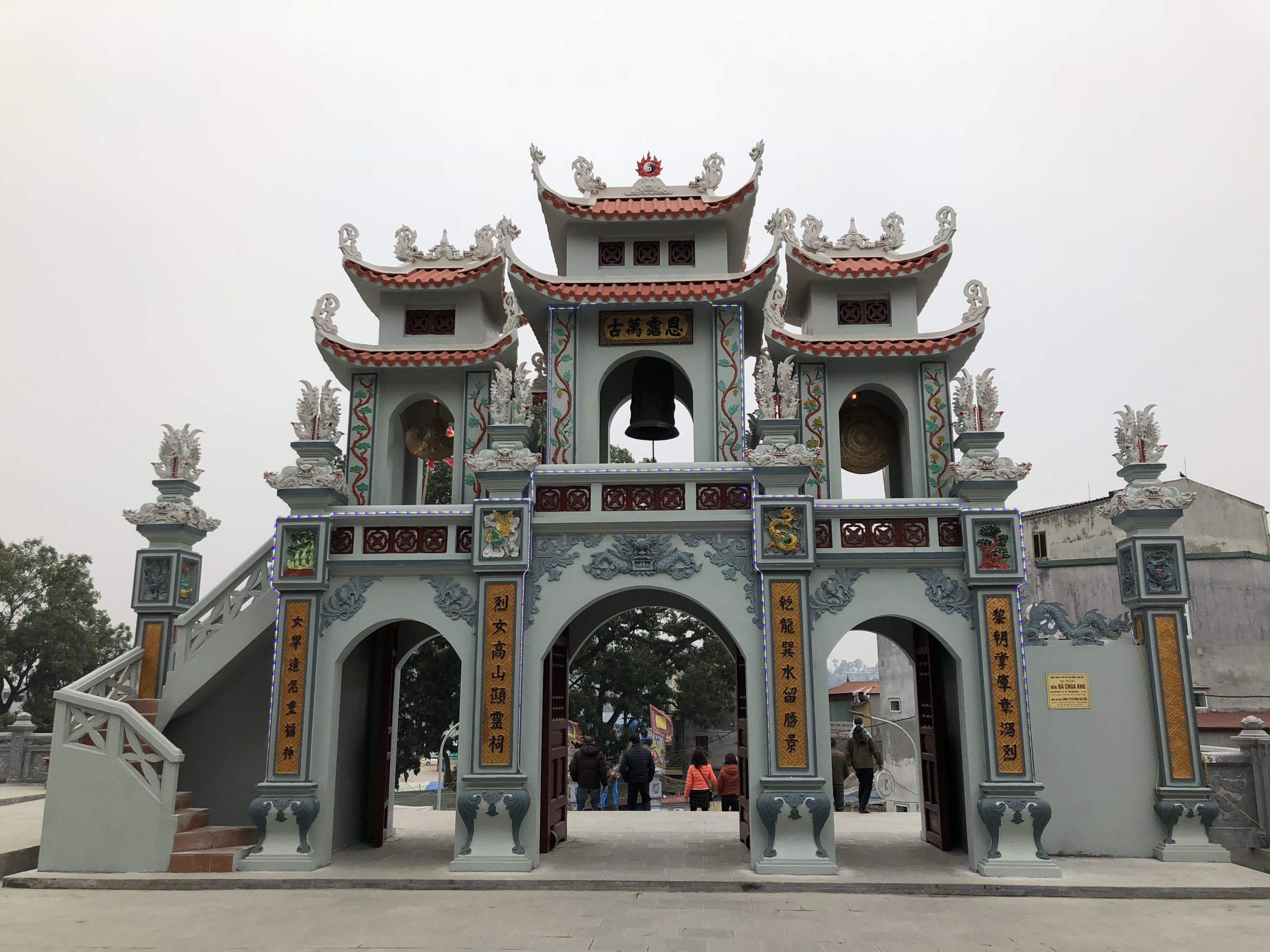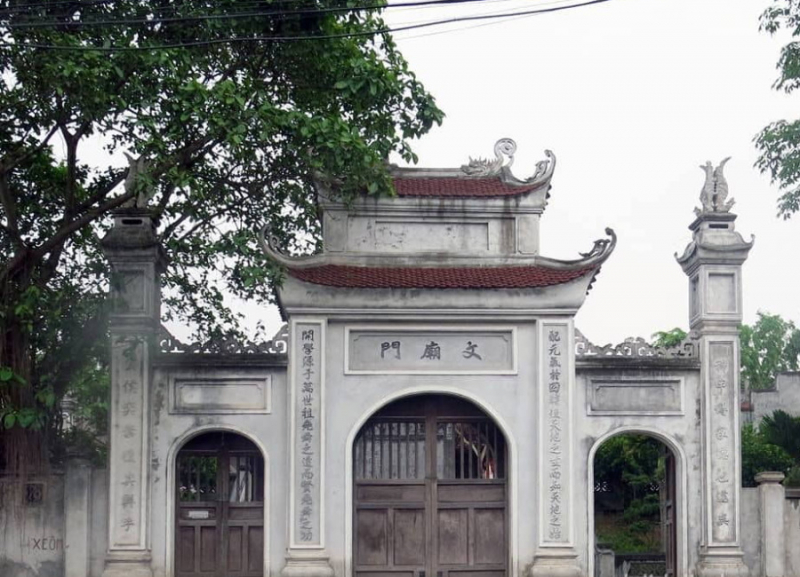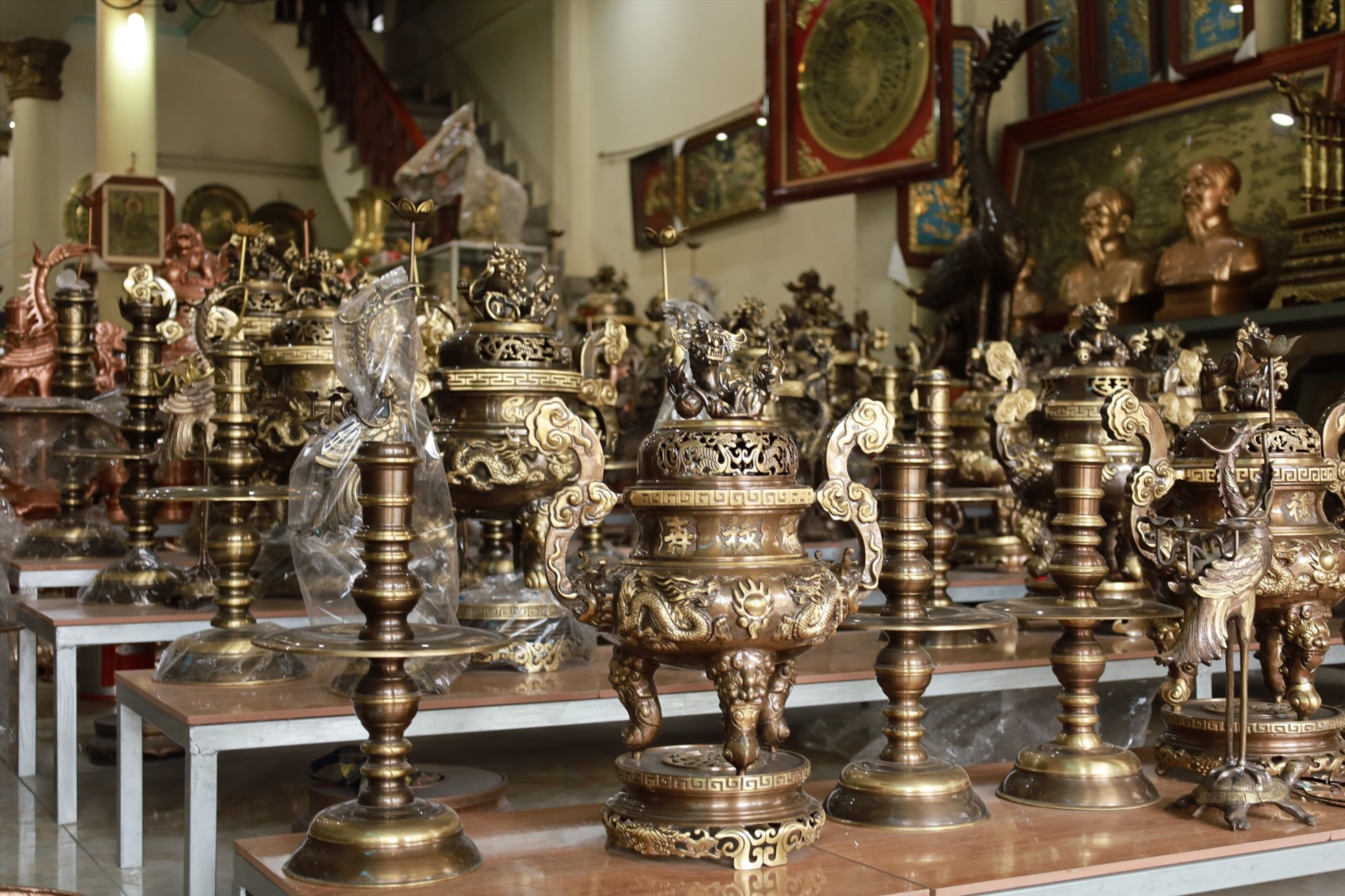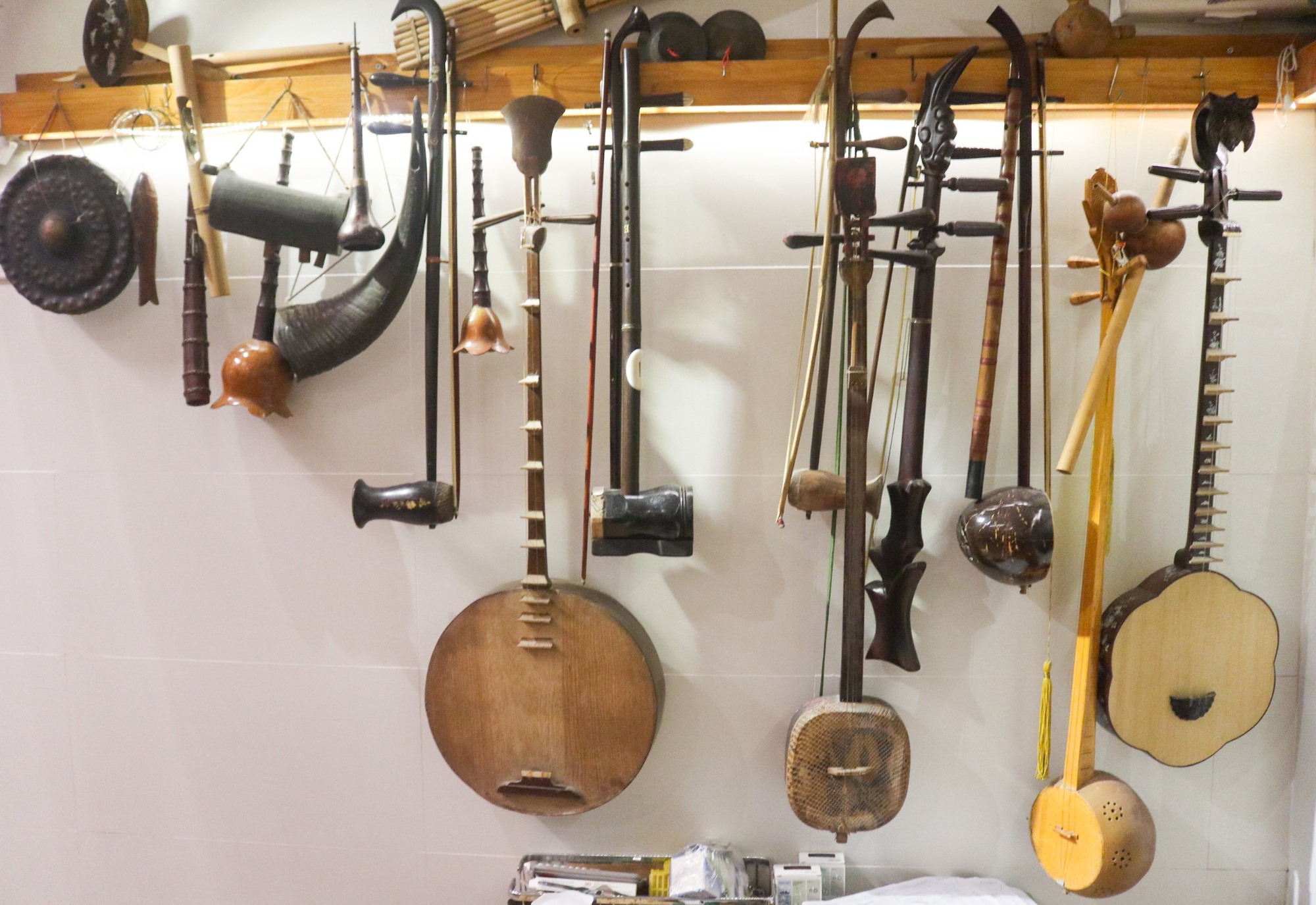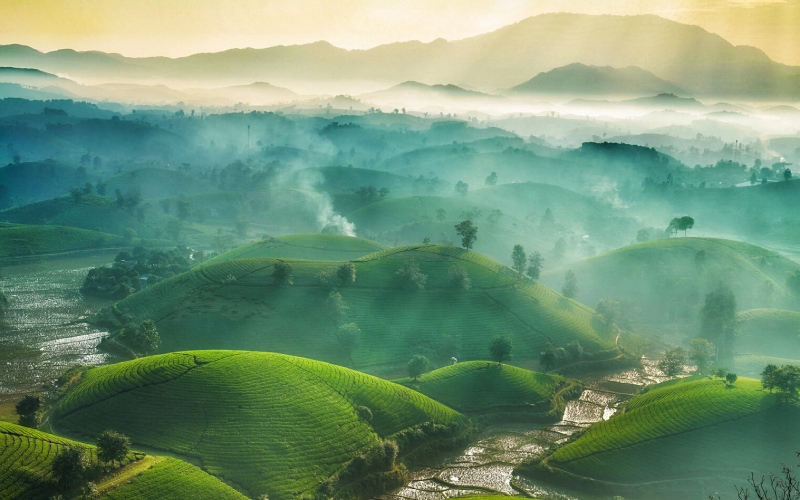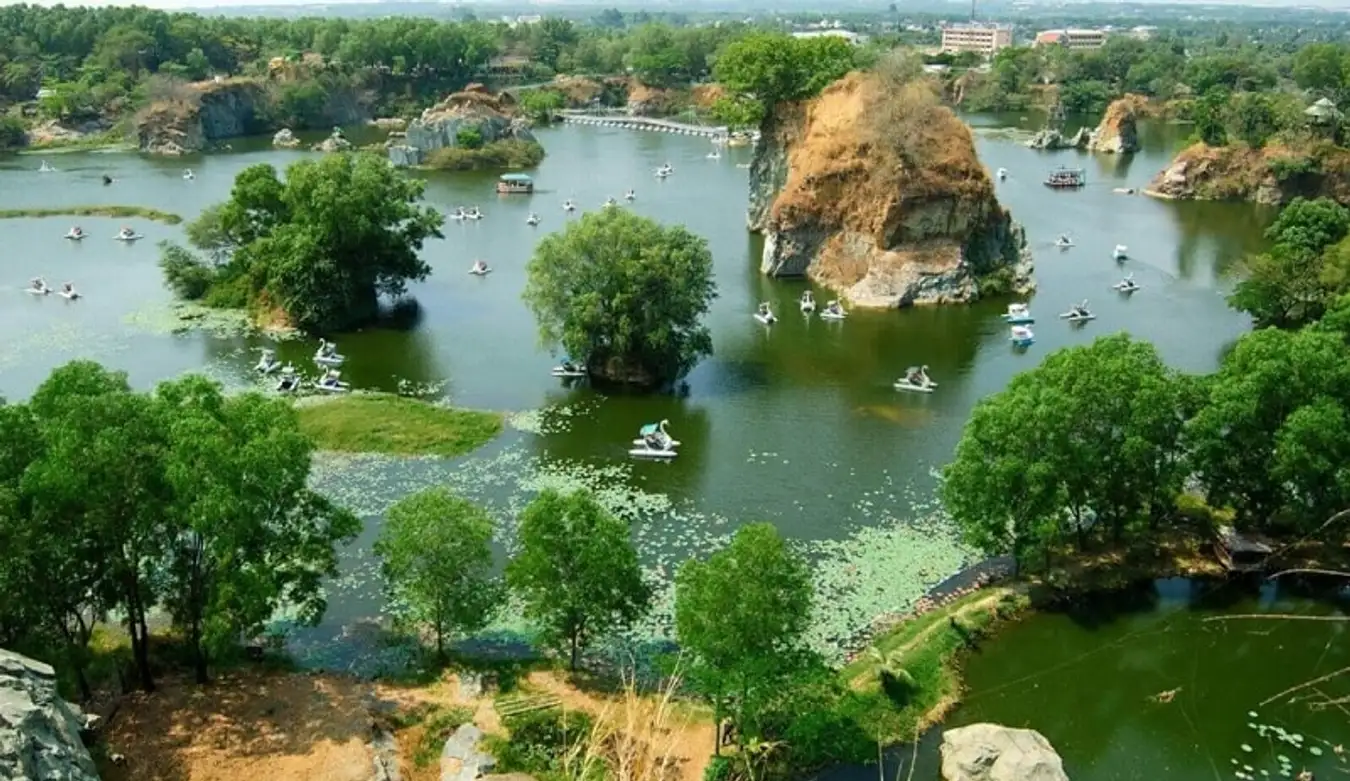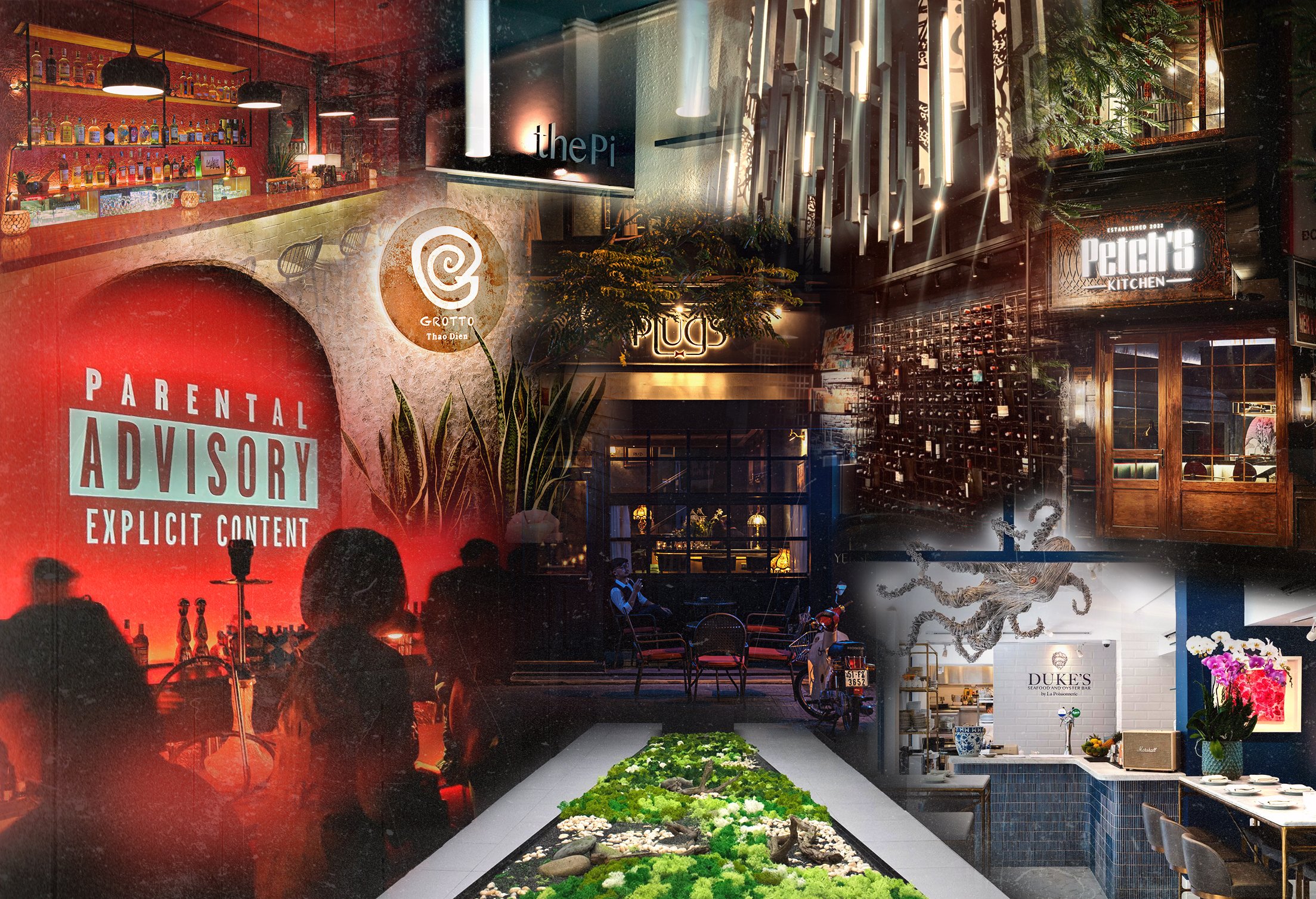Top 10 most beautiful and famous tourist destinations in Bac Ninh province
Bac Ninh is a land with many beauties of traditional culture, typical of which is the lyrical Quan Ho melody that touches people’s hearts. Not only that, Bac Ninh tourism also attracts domestic and foreign tourists because of its scenic spots, historical relics and long-standing traditional craft villages. As the center of ancient Kinh Bac land, Bac Ninh holds its own unique beauty in natural scenery as well as long-standing culture. If you have the opportunity to come to Bac Ninh, don’t forget to visit the most beautiful and famous tourist destinations here that Travel Vivu is mentioning. And now let’s explore what those places are!
Do Temple
Do Temple, also known as Ly Bat De Temple or Co Phap Dien, is a famous tourist destination in Bac Ninh, carrying a thousand-year history of the Ly Dynasty. Located on a campus of more than 31,000m², Do Temple exudes the solemn, ancient and aura typical of the Thang Long period.
Do Temple was built on March 3, Canh Ngo year 1030 by King Ly Thai Tong and has undergone many restorations and expansions thereafter. Although it was completely destroyed during the war, in 1989, Do Temple was restored and rebuilt based on careful research by experts and the remaining vestiges. This solemn architectural work recreates the ancient and quiet features of the Ly dynasty.
When entering the grounds of Do Temple, visitors will be amazed by the sophisticated architecture and the majesty and sacredness of the main temple and other worship areas. At the main hall, you will see the engraved motifs “Edict to move the capital” by King Ly Thai To and the poem “Nam Quoc Son Ha” – Vietnam’s first Declaration of Independence. The fragrant atmosphere in the main hall creates a quiet, ancient and sacred space.
The large campus around Do Temple is decorated with green trees and clean stone walkways. Crescent Lake located within the campus is often the venue for Bac Ninh Quan Ho ceremonies – a unique local cultural heritage. Do Temple is also the place where many special festivals take place. On the full moon day of March every year, visitors can attend a traditional festival to commemorate the contributions of the Ly Dynasty kings in protecting and developing the country. Do Temple is a place not to be missed when tourists come to Bac Ninh. Explore this temple and enjoy the solemn, ancient space bearing the mark of the Ly Dynasty.
Dau Pagoda
Dau Pagoda, also known by names such as Dien Ung Pagoda, Phap Van Pagoda or Co Chau Pagoda, is a famous spiritual destination in Bac Ninh and is considered the first pagoda built in Vietnam. with preserving the most ancient Buddhist center. With a long history and special sacredness, Dau Pagoda is an attractive destination for tourists who want to explore the cultural and spiritual beauty of this land.
Dau Pagoda is located on a high and wide land, providing beautiful and peaceful scenery. The architecture of the pagoda is built in the “foreign domestic” style with unique works such as three gates, front porch, Hoa Phong tower, Tam Bao, rear hall and other auxiliary works. Over the centuries, Dau Pagoda has undergone renovations and maintained its ancient beauty and solemnity.
As the first Buddhist temple in Vietnam, Dau Pagoda is not only worth exploring for its historical value, but also for the special legends and myths related to it. Visitors will be fascinated by the sacred and spiritual space at this temple. Statues of Buddha, Bodhisattva, Tam The, Monsignor, Saint Monk and many other statues create a wonderful space and bring a feeling of peace and tranquility.
One of the special experiences at Dau Pagoda is participating in the festival. Every year, on the 8th day of the fourth lunar month, Dau Pagoda holds a traditional festival, considered one of the oldest festivals in Vietnam. Visitors can participate in ancient rituals and explore unique culture here.
Dau Pagoda is a great destination for those who love spirituality and wish to explore the unique culture and history of Bac Ninh. With its sacred space and unique architecture, Dau Pagoda gives visitors a memorable experience and peaceful enjoyment. Take time to explore and feel the sacredness at this temple.
Phu Lang Pottery Village
When you are passionate about ceramics and want to explore the colorful art and talented work of potters, don’t miss Phu Lang Pottery Village when you arrive in Bac Ninh. Located in Que Vo district, 4km from Luc Dau River and on the banks of the beautiful Cau River, this pottery village is not only a romantic paradise but also allows you to explore the process of creating unique ceramic products such as cups, kettles, pots, clay pots and many other things.
Phu Lang pottery village has existed and developed since the Tran Dynasty and still retains its preciousness to this day. Luu Phong Tu, who is recognized as the founder of pottery in the village, made great contributions in learning ceramic techniques and building the wonderful Phu Lang pottery village as it is today. He learned pottery while studying abroad in China and that skill has been passed down through many generations, maintained and developed into what it is today.
Phu Lang Pottery Village focuses on three main types of products: ceramics used in folk religious rituals, household ceramics and decorative ceramics. Each type of product is meticulously and delicately made, bringing users the most perfect ceramic works. Notably, a number of Phu Lang ceramic products from the 17th to 19th centuries are still preserved at the Vietnam History Museum, proving the cultural and artistic value of this pottery village.
Phu Lang Pottery Village to not only experience the pottery making process and admire wonderful traditional products, but also have the opportunity to learn more about the history and art of talented potters in this village. This is an opportunity for you to discover the uniqueness and creativity in each traditional handmade ceramic work, giving you an exciting and vibrant experience at Phu Lang pottery village.
But Thap Pagoda
But Thap Pagoda (also known as Ninh Phuc Tu) is one of the places that attracts many tourists to Bac Ninh. Recognized as a special National Monument, But Thap Pagoda has an ancient and quiet beauty, especially with the largest wooden statue of Guan Yin with a thousand eyes and a thousand hands in our country.
Located on the banks of the Duong River, But Thap Pagoda has an ancient, mossy appearance but is no less sacred. The pagoda is shaped like a pen, standing proudly in the sky, next to vast, vast fields. Coming here, you are free to walk in the large, spacious and quiet campus. But Thap Pagoda will forever be an ideal stop for those who want to find their spiritual roots. Regarding the history of its formation, up to now there have been no accurate sources recorded. However, there is some information that the pagoda dates back to the Tran Dynasty and was expanded and restored many times.
This artistic masterpiece was achieved in large part, as seen, thanks to the efforts of mother and daughter Queen Mother Ngoc Truc and Princess Ngoc Duyen. In 1619, Lord Trinh Tung forced King Le Kinh Tong to commit suicide and then installed Prince Duy Ky on the throne, taking the title Le Than Tong. Intelligent and well-educated, the king was also forced by Trinh Tung to marry his daughter, Ngoc Truc, whose husband, Le Tru, was beheaded and had four children. Becoming king until 1643, Le Than Tong ceded the throne to his son, Crown Prince Duy Huu, Le Chan Tong, then took Ngoc Truc to Thanh Hoa to build Mat Pagoda, which has now been completely destroyed. As for the Queen Mother, whose fate was uncertain, she also wanted to rely on the Buddha, so she and her female relatives went to the Buddhist temple to listen to Zen Master Chuyet Chuyet preach the sutras. From there, she asked her father the king for permission to restore the dilapidated But Thap Pagoda so that she could officially become a monk later.
As one of the oldest ancient pagodas in Bac Ninh, But Thap Pagoda has a harmonious combination of architecture and space, creating its own beauty, attracting many tourists. The main pagoda has three rows of buildings: Tien Duong – Thien Huong – Thuong Dien forming the word “cong”, inside is the statue of Guan Yin Buddha as well as many other worship statues. In particular, there is Bao Nghiem tower with architecture like a giant pen reaching straight into the sky. The stone slabs are carved meticulously and meticulously.
Dinh Bang village communal house
The next name on the list of the most beautiful and famous tourist destinations in Bac Ninh is Dinh Bang communal house. This communal house was built in the late 18th century to worship the village’s tutelary gods. The unique architecture here includes the main hall and gradually higher walls on both sides to create a meeting space for the villagers. Coming here, you can admire nearly 500 dragon and phoenix reliefs in a peaceful and majestic space. Referring to Dinh Bang village communal house, the ancients had a saying:
“The first is Dong Khang communal house,
Second is Bang communal house, third is Diem communal house.
Dinh Bang village communal house was built in 1700 during the Later Le period and lasted thirty-six years until 1736. The winners were mandarin Nguyen Thac Luong, from Dinh Bang (once the governor of Thanh Hoa) and his wife Nguyen Thi Nguyen, from Thanh Hoa. My grandparents bought ironwood, a precious and durable wood, and brought it as offerings to build the communal house. Dinh Bang Communal House consists of a massive communal house connected to the rear harem in the form of a mallet-shaped plan, also known in the form of the Confucian script as “nail style”. The great hall is 20m long, 14m wide, 8m high, with a beautiful drooping roof accounting for 5.5m of total height.
Coming to Dinh Bang village communal house, you will experience a unique architectural space with a massive, wide communal roof space with many unique architectural sculptures. At the same time, the interior of the communal house is decorated with many different shapes such as dragons, phoenixes, swords, pine trees, bamboo,… This is also the unique feature that makes Dinh Bang communal house attract many tourists to visit. Observe and learn about unique and specific cultural features.
Dinh Bang communal house was ranked as a National Monument in 1961 and is preserved to this day. Coming to this tourist destination, not only will you experience a peaceful, airy space but you can also learn more unique cultural knowledge of your people.
Dong Ho painting village
It would be a mistake not to mention Dong Ho painting village in Bac Ninh – one of the tourist destinations that attracts many domestic and foreign tourists to visit the painting process and see masterpieces created by long-standing artisans. composed. Dong Ho village is about 33km east of Hanoi and located close to the southern bank of Duong river dike, Ho village or Dong Ho is a traditional craft village, whose Nom name is Mai village, now belongs to Song Ho commune, Thuan Thanh district, Bac Giang province. Ninh. This is the cradle of a unique line of folk wood carvings known to many people both at home and abroad, with paintings that have long entered the spiritual life of many Vietnamese people. Famous for its painting craft village with a long-standing unique culture. Dong Ho paintings were also nominated to UNESCO to be recognized as an Intangible Heritage. Through each painting, the culture in the daily lifestyle of the people is shown.
Previously, Dong Ho paintings were mainly sold during Tet holidays. Today, Dong Ho paintings are increasingly popular and preserved because of the cultural value these works bring. What makes Dong Ho paintings different is the printing paper and color combination in each painting. The special type of paper of Dong Ho paintings is message paper, used to draw pictures of life with a variety of colors, harmoniously combined to create an extremely unique whole.
If you visit Bac Ninh, don’t forget to visit Dong Ho painting village to have the opportunity to admire the unique works here. From there, we can understand more about the diverse and unique national culture.
Phat Tich Temple
Phat Tich Pagoda (also known as Van Phuc Pagoda) is a pagoda located on the southern slope of Phat Tich Mountain (also known as Lan Kha Mountain, Non Tien), Phat Tich Commune, Tien Du District, Bac Ninh Province. In the pagoda, there is the largest stone Buddha statue of the Ly Dynasty in Vietnam. Phat Tich Pagoda was ranked as a Historical-Cultural Monument in Decision No. 313/VH-VP, dated April 28, 1962 of the Ministry of Culture and signed by the Prime Minister and ranked 62nd Special National Monument. of Vietnam.
Phat Tich Pagoda belongs to Phat Tich commune, where the meeting between Indian Buddhism and ancient Vietnamese folk beliefs took place. On that basis, the country’s first Buddhist center was formed (Dau – Luy Lau center). According to ancient documents, Phat Tich Pagoda was built in the fourth year of Thai Binh (1057) with many horizontal and vertical buildings. In 1066, King Ly Thanh Tong built a tall tower. After the tower fell, a monolithic green stone statue of Amitabha Buddha was revealed and covered with gold. To recognize the miraculous appearance of this statue, the village changed its name to Phat Tich and moved it up the mountainside.
The green stone statue of Amitabha Buddha sitting on a lotus is 1.87 m high, a unique sculpture of the country’s fine arts in general and statue art in particular. This is a unique highlight that everyone remembers when talking about Phat Tich Pagoda. Currently, Phat Tich Pagoda has 7 front halls used to welcome guests, 5 halls to worship Buddha, Amitabha and the three generations, 8 Patriarch’s halls and 7 Mother’s temples. Bac Ninh Phat Tich Pagoda has the architecture of the Ly Dynasty, shown through three steps of canvas foundation on the mountainside with a vertical stone embankment like a wall 58m long, 3-5m high, in the middle of the wall is a stone walkway. 5m wide with 80 steps.
Phat Tich Pagoda Festival is usually held for three days, from the 3rd to the 5th day of the Lunar New Year every year, in which the main day of the festival is the 4th day. From the opening day of the festival (the 3rd day of the Lunar New Year), many visitors flocked to the festival. Go to Phat Tich Pagoda to worship Buddha and pray for peace. Tens of thousands of people present here, causing the entrances to the pagoda, bell tower, and Amitabha Buddha statue to be crowded
Ba Chua Kho Temple
Ba Chua Kho Temple is located halfway up Kho mountain, in Co Me area, Vu Ninh Ward, Bac Ninh City, Bac Ninh Province. This is not only a valuable historical relic located in the relic complex of Co Me area (including: Communal house – Pagoda – Temple) but also a place where people all over the country make religious pilgrimages every year.
The temple is related to the event that Ly Thuong Kiet led the resistance war against the Song army in 1076. At that time, Co Me village, Kho mountain, Cau Gao… were places where the food warehouses of the Ly army were located. southern bank of the Nhu Nguyet (Cau River) battle line. Kho Mountain, Dinh Mountain, and Thi Cau were also a strategic location that could control the road from Lang Son across the Cau River to Thang Long in the past.
Co Me Temple worshiping Ba Chua Kho is a place to commemorate a Vietnamese woman who skillfully organized food production and storage, and took care of the national treasure in the period before and after the Nhu Nguyet victory. During the Ly Dynasty, she helped the court look after the food warehouse at Nui Kho (Bac Ninh province) and “defended” the resistance war against the Song army on January 12, the year of Dinh Ty (1077). The King regretfully bestowed upon her the title of Phuc Than. The people missed her so much that they built a temple at the old royal food warehouse in Kho Mountain and called her with reverence: Ba Chua Kho.
Bac Ninh ancient citadel
Bac Ninh Citadel has been closely associated with the cultural life of its residents, and has become a proud symbol in the history and culture of Vietnam. The citadel was built during the reign of King Gia Long, in 1804, and has gone through many stages of construction and renovation.
Bac Ninh Ancient Citadel is located in Bac Ninh city, is a notable historical and cultural destination. With a unique hexagonal design, this place attracts visitors with its impressive architecture and special historical value. Bac Ninh Citadel is not only an important architectural work, but also plays an important role in the history and culture of the region. Before being occupied by the French colonialists, Bac Ninh citadel was the administrative center of the two provinces of Bac Ninh – Thai Nguyen. In 1925, Bac Ninh citadel was ranked as a typical architectural work of art.
Bac Ninh ancient citadel plays an important role in the history of Vietnam. It was the capital of Au Lac and Dai Viet in the 3rd and 13th centuries. Many Tran and Ly dynasties also chose Bac Ninh ancient citadel as a place to reside and work. The historical and cultural diversity of this ancient citadel has created an important cultural heritage for the country.
In addition to historical and cultural value, Bac Ninh ancient citadel is also an attractive culinary destination. Visitors can enjoy traditional delicacies such as fried dumplings, toast, fish cakes, Bac Ninh vermicelli noodles, La Vong fish cakes, Ly Nhan spring rolls and Bac Ninh palm sweet soup. These dishes not only satisfy the taste buds but also carry the rich flavors of local culture and traditions.
Dai Bai bronze casting village
Dai Bai bronze casting village located in Tien Du district, Bac Ninh province, is a unique and attractive tourist destination for those who love art and want to explore the traditional culture of the Northern region, Vietnam. Male. With a history of more than 900 years, Dai Bai bronze casting village is a place to preserve and develop the sophisticated art of bronze casting. According to ancient bibliographic documents, the copper mound and hammer craft in Dai Bai has existed since the 11th century, and the founder of the craft is considered Nguyen Cong Truyen (989-1069). He taught how to cast household items such as brass, pots, pans and pans and laid the foundation for the outstanding development of this craft village.
Dai Bai bronze casting village is divided into 4 hamlets: Son hamlet, Tay hamlet, Trung hamlet and Ngoai hamlet. Each hamlet undertakes a specific bronze casting craft, from mounding bronze pots, making trays and pots, kettles and small pots, to crafting worship items and bronze statues. This division has helped Dai Bai craft village specialize and become a famous bronze production center. When visiting Dai Bai bronze casting village, visitors will admire thousands of bronze products made from bronze. Made by talented artisans. The works not only possess exquisite lines, but also demonstrate sophistication and care in every detail. From bronze statues with religious and cultural significance, to decorative items such as quarter paintings, vases, and tea sets, Dai Bai bronze casting village brings a rich and diverse world of art.
In particular, Dai Bai bronze casting village is also a place that preserves many historical and cultural relics. The mausoleum of bronze master Nguyen Cong Truyen, Van Lang communal house, Dien Loc communal house, and Dien Phuc pagoda are notable destinations where visitors can explore and learn about the history and traditions of Dai Bai craft village. .
Coming to Dai Bai, visitors can not only discover the unique art of bronze casting, but also experience the life and learn about the culture of local people. Through cooperatives and technical improvements, the bronze casting industry in Dai Bai has contributed to improving people’s lives and finding export markets. This also creates the attraction and development of this craft village.
